|
Here are all the paintings of Dufy Raoul 01
| ID |
Painting |
Oil Pantings, Sorted from A to Z |
Painting Description |
| 45068 |
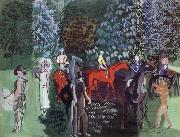 |
Chevaux Jockeys Elegantes au Bois |
mk179
SIgned and dated 1925
Gouache and watercolor
|
| 45075 |
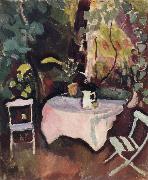 |
Dans le Jardin au Havre |
mk179
Signed
Oil on canvas
55.3x46.4cm
|
| 45072 |
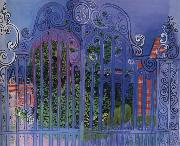 |
La Grille |
mk179
Signed
Oil on canvas
130.2x162.2cm
|
| 45073 |
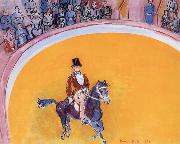 |
Le Cirque |
mk179
Signed and dated 1934
oil on canvas
65.4x81.3cm
|
| 45007 |
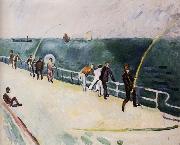 |
Les Pecheurs a La Ligne |
mk183
Oil on canvas
59.7x73cm
|
| 53943 |
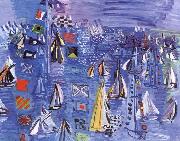 |
Regatta at Cowes |
mk234
1934
82x100cm |
| 31141 |
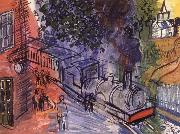 |
Train en gare |
mk71
Toile
H 0.30
L.0.40
Musee d'Art et d'Industrie Andre Diligent,,de Roubaix
|
|
|
| Dufy Raoul
|
| Le Havre 1877-Forcalquier 1953
was a French Fauvist painter. He developed a colourful, decorative style that became fashionable for designs for ceramics, textiles and decorative schemes for public buildings. He is noted for scenes of open-air social events. Raoul Dufy was born at Le Havre, in Normandy, one of a family of nine members. He left school at the age of 14 to work in a coffee importing company. In 1895 when he was 18, he started evening classes in art at Le Havre Ecole des Beaux-Arts. He and Othon Friesz, a school friend, studied the works of Eug??ne Boudin in the museum in Le Havre. Raoul Dufy, Regatta at Cowes, (1934), Washington D.C. National Gallery of Art.In 1900, after a year of military service, Raoul won a scholarship enabling him to attend the Ecole Nationale des Beaux-Arts in Paris, where he was a fellow student with Georges Braque. The impressionist landscapists, such as Claude Monet and Camille Pissarro, influenced him. Introduced to Berthe Weill in 1902, she showed his work in her gallery. Henri Matisse's Luxe, Calme et Volupte, which Dufy saw at the Salon des Independants in 1905, was a revelation to the young artist and directed his interest towards Fauvism. Les Fauves (wild beasts) emphasised bright colour and rich bold contours in their work, and Dufy's painting reflects this approach until about 1909, when contact with the work of Paul Cezanne led him to adopt a somewhat subtler technique.
|
|

